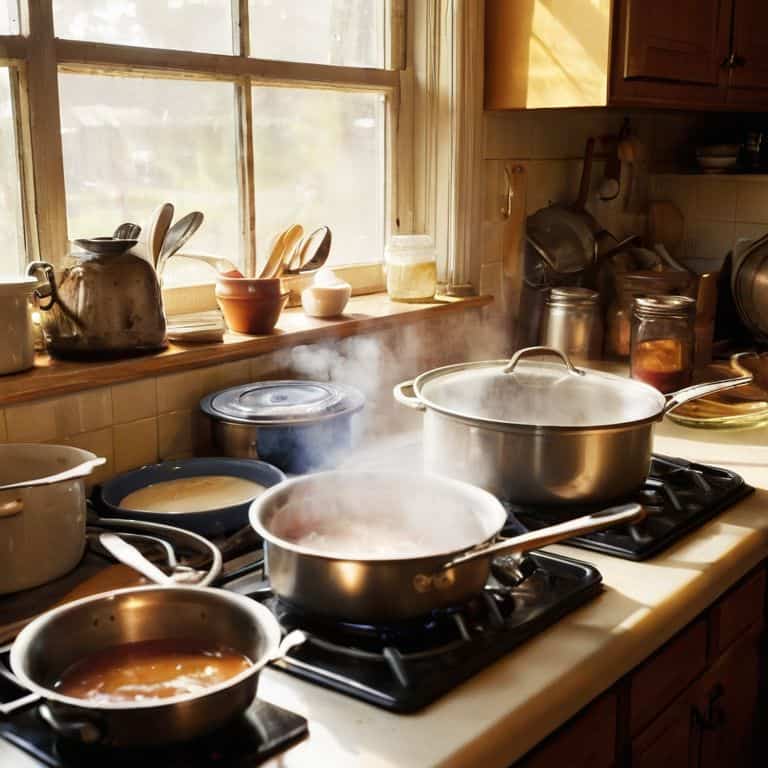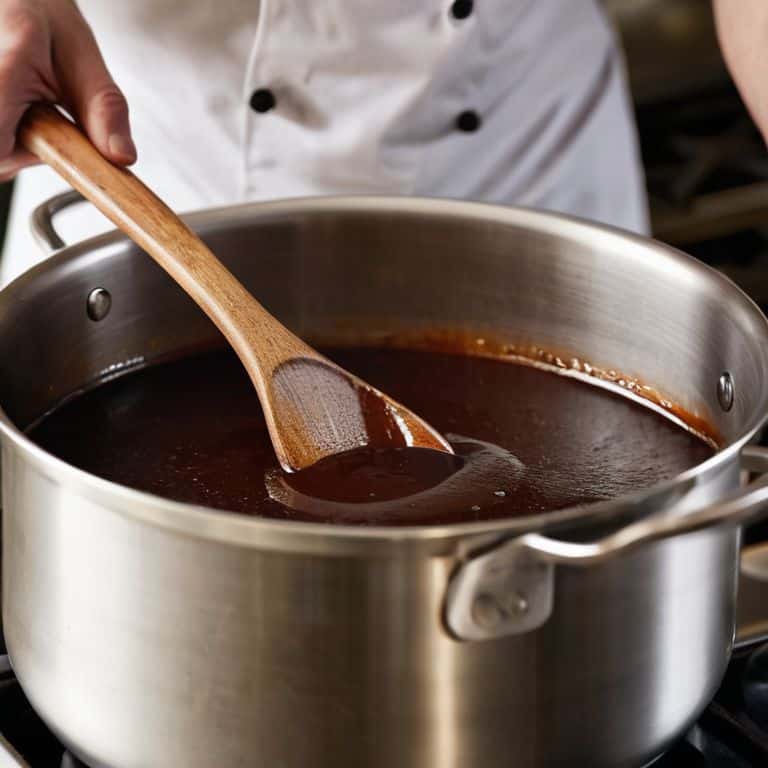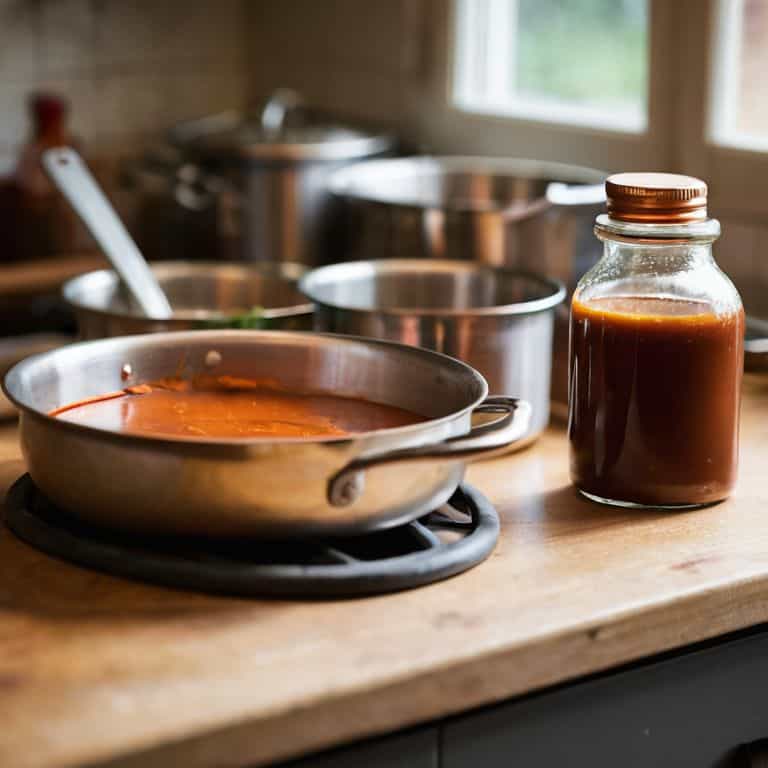As a flight instructor, I’ve learned that navigating the kitchen can be just as daunting as navigating through turbulent skies, especially when it comes to creating a good “a guide to making sauces”. I recall a particularly frustrating experience with a student who struggled to understand the basics of sauce preparation, much like a pilot trying to land without a clear understanding of the fundamentals. It made me realize that the key to mastering sauces lies not in complicated recipes, but in understanding the simple principles that govern their creation.
In this article, I’ll share my step-by-step approach to making sauces, breaking down the process into manageable, easy-to-follow steps. You’ll learn how to create a variety of sauces, from classic marinara to rich and creamy Alfredo, using straightforward techniques and ingredients. My goal is to provide you with a clear, no-nonsense guide that will give you the confidence to experiment and create your own signature sauces. By the end of this guide, you’ll be well on your way to becoming a sauce-making pro, and you’ll understand that making sauces is not rocket science, but rather a simple process that requires patience, practice, and a willingness to learn.
Table of Contents
Guide Overview: What You'll Need

Total Time: 1 hour 15 minutes
Estimated Cost: $10 – $30
Difficulty Level: Easy
Tools Required
- Blender (or food processor)
- Saucepan (stainless steel or non-stick)
- Whisk
- Measuring Cups
- Measuring Spoons
Supplies & Materials
- Olive Oil
- Butter
- Onions
- Garlic
- Herbs and Spices (varies depending on sauce type)
- Tomato Paste (for tomato-based sauces)
- Heavy Cream (for creamy sauces)
- Lemon Juice (for brightening flavors)
- Salt
Step-by-Step Instructions
- 1. First, let’s start by understanding the foundation of a good sauce, which is a mixture of ingredients that provide flavor, texture, and balance. To begin, you’ll need to choose your core ingredients, such as stocks, wines, or creams, and have them ready for the next steps. I like to think of this process as preparing for takeoff, where every element must be in place before you can soar.
- 2. Next, you’ll want to heat things up by sautéing your aromatics, such as onions, garlic, or shallots, in a bit of oil or butter. This step is crucial as it releases the flavors and textures that will elevate your sauce. Remember, just as a pilot must navigate through different altitudes, you’re navigating through flavors, and each step requires attention to detail.
- 3. Now, it’s time to add your core flavor components, such as herbs, spices, or other seasonings. This is where your sauce starts to take shape, much like how a plane begins to take form on the assembly line. Each component adds a unique characteristic, and understanding how they interact is key to creating a balanced sauce.
- 4. With your flavors combined, the next step is to introduce a liquid component, such as broth or cream, to create the sauce’s body. This is akin to fueling up your plane; you need the right amount to reach your destination without overloading. Too little, and your sauce will be too thick; too much, and it will be too thin.
- 5. As you bring your sauce to a simmer, it’s essential to reduce and refine, allowing the flavors to meld together and the sauce to thicken. This process is much like flying through turbulence; you must be patient and let the forces work in your favor. Reducing the sauce concentrating the flavors, making each spoonful a perfect blend of taste and texture.
- 6. The final step before serving is to finish and finesse your sauce. This might involve adding a pat of butter to enrich the flavor, a splash of cream for smoothness, or a squeeze of fresh citrus for brightness. It’s the equivalent of making the final approach to landing; every move must be precise to ensure a perfect touchdown.
- 7. Lastly, taste and adjust as you go, remembering that the art of making sauces is not just about following a recipe, but about understanding how flavors interact and adjusting your approach accordingly. Just as a pilot must be ready to adapt to changing weather conditions, you must be willing to tweak your sauce to achieve perfection. This might involve adding more seasoning, adjusting the consistency, or even starting over if something doesn’t feel right.
A Guide to Making Sauces

As we explore the world of sauces, it’s essential to understand the concept of reducing sauce for intensity. This technique involves cooking the sauce for a longer period to evaporate excess liquid, resulting in a richer, more concentrated flavor. By reducing the sauce, you can enhance the flavor profile and create a more velvety texture. This is particularly useful when making classic sauces like espagnole or demi-glace.
When it comes to vinaigrettes, emulsification techniques play a crucial role in creating a stable and smooth sauce. By slowly whisking in the oil, you can create a harmonious balance of flavors and textures. This technique is also essential when making derivative sauces from mother sauces, as it allows you to introduce new flavors and ingredients while maintaining the sauce’s integrity.
To take your sauce making to the next level, consider experimenting with different thickening agents. From roux to slurry, each agent offers a unique texture and flavor profile. By understanding how to use these agents, you can create a wide range of sauces, from the classic bechamel recipe to more complex pan sauces. Remember, the key to making great sauces is to balance flavors and textures, so don’t be afraid to experiment and adjust your recipes accordingly.
Emulsification Secrets for Vinaigrettes
To create a stable vinaigrette, emulsification is key. This process involves combining two or more liquids that wouldn’t normally mix, like oil and vinegar. I like to think of it as navigating through turbulent air – you need to find a smooth path to bring everything together. In the case of vinaigrettes, a clever copilot like Dijon mustard or egg yolks helps to stabilize the mixture, allowing the flavors to meld together seamlessly.
By understanding the principles of emulsification, you’ll be able to craft vinaigrettes that are both delicious and durable. Just as a well-planned flight route ensures a safe and enjoyable journey, a well-crafted vinaigrette can elevate your dishes to new heights. With a little practice and patience, you’ll be whipping up smooth, tangy vinaigrettes like a pro, and your taste buds will be soaring.
Reducing Sauce for Intensity Boost
Reducing sauce is an art that can elevate the flavor of any dish. It’s similar to navigating through dense clouds – you need to be patient and trust your instruments. By slowly simmering the sauce, you allow the water content to evaporate, concentrating the flavors and resulting in a richer, more intense taste. This technique is especially useful for sauces like demiglace or glazes, where a deep, velvety texture is desired.
As you reduce the sauce, remember to stir occasionally and monitor the heat. You want to avoid scorching the sauce, which can introduce bitter flavors. Think of it like adjusting your altitude – you need to make gradual adjustments to reach your desired level. With practice, you’ll develop a sense of when the sauce has reached the perfect consistency and flavor intensity.
Navigating Sauce Making with Ease: 5 Key Tips
- Start with a Strong Foundation: Understanding the Five Mother Sauces
- Balance Your Flavors: The Art of Acidity and Sweetness in Sauce Making
- Texture Matters: Mastering the Art of Reduction and Thickening
- Embracing Emulsification: The Secret to Smooth and Stable Sauces
- Experiment with Flavor: How to Adapt and Modify Sauces for Different Dishes
Key Takeaways for Mastering Sauces
Understand the fundamental principles of sauce preparation to elevate your dishes, just like knowing the basics of flight helps a pilot navigate any situation
Apply techniques like reduction and emulsification to add depth and complexity to your sauces, similar to how a pilot adjusts altitude and speed to optimize flight
Practice makes perfect, so don’t be afraid to experiment and adjust your sauce recipes, just as a pilot continually updates their flight plan to ensure a safe and successful journey
Navigating the Skies of Sauces
Just as a well-executed flight plan requires precision and patience, crafting the perfect sauce demands a deep understanding of its fundamental components and a gentle touch, much like the delicate dance of takeoff and landing.
Daniel Sato
Mastering the Art of Sauce Making

As we conclude this guide to making sauces, let’s take a moment to reflect on the key points we’ve covered. From the basics of sauce preparation to the intricacies of reducing and emulsification, we’ve broken down the complex world of sauces into manageable, step-by-step instructions. By following these guidelines, you’ll be well on your way to creating delicious, restaurant-quality sauces that elevate your dishes and impress your guests. Whether you’re a seasoned chef or a culinary newcomer, the art of sauce making is within your reach, and with practice, you’ll become more confident in your ability to experiment and innovate.
As you continue on your sauce-making journey, remember that the true magic happens when you combine technique with creativity. Don’t be afraid to think outside the box and try new ingredients, flavor combinations, and methods. With time and patience, you’ll develop your own unique style and voice in the kitchen, and the world of sauces will become a limitless playground for exploration and discovery. So, go ahead, get cooking, and remember that the sky’s the limit when it comes to the incredible sauces you can create!
Frequently Asked Questions
What are the most essential ingredients to have in my pantry for making a variety of sauces?
As a pilot, I always ensure I have the right tools on board. For sauce-making, my essential pantry staples include olive oil, butter, garlic, onions, and a variety of herbs and spices. These basics will help you navigate a range of sauces, from marinara to beurre blanc, with ease and confidence.
How do I prevent sauces from separating or breaking, especially when serving?
To prevent sauces from separating, think of it like maintaining aircraft stability – you need balance. For emulsified sauces, gently heat and whisk them to recombine. For others, adjust the ratio of ingredients or add a stabilizer like cornstarch. It’s all about finding that sweet spot, just like leveling an aircraft for a smooth flight.
Are there any specific cooking techniques or tools that can help me achieve a smooth and consistent sauce texture?
To achieve a smooth sauce texture, I recommend using an immersion blender or a roux to thicken and emulsify your sauce. Think of it like navigating through turbulence – you need the right tools to stabilize and smooth out the ride. In this case, the right tool helps you avoid lumps and achieve a consistent texture.
